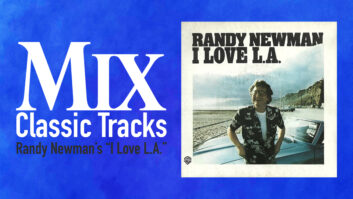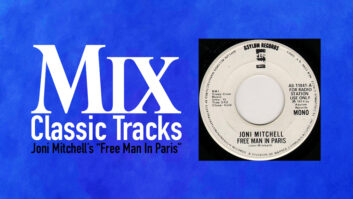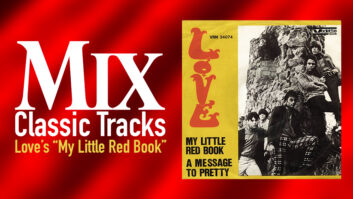NEW YORK, NY—Dating back to his days with Dire Straits, guitarist extraordinaire Mark Knopfler has always been a stickler for sound, perhaps culminating with his 1985 multi-platinum Brothers In Arms global smash album that was so impeccably recorded that consumer electronics stores often used the CD as a demo disc to show off the pristine aural attributes of the then-new digital format. Of course, taking that sound on the road presented new challenges that his Eighties sound crew, including current solo tour monitor engineer Kerry Lewis (who first mixed Dire Straits in 1983), delivered in spades in arenas and stadiums around the world.
Mark Knopfler’s fall world tour supporting his latest album, Tracker, carried audio support from Berlin-based Black Box Music. Providing sound for Knopfler’s current world tour in support of his eighth solo album, Tracker, was Black Box Music of Berlin, Germany. Since 1992, Black Box Music has provided complete solutions for major act concert tours. Pro Sound News caught up with the fall tour on the first of two sold-out nights at Manhattan’s 2,894-seat Beacon Theater; the production eventually wrapped up in Fort Lauderdale, Fla.

When Knopfler launched a solo career in the mid-1990s, he mostly pared down the production to fit a more intimate theater setting, and that was the case with the U.S. leg of the Tracker tour. Of course, the music played by his nine-member band, most of whom had played with Knopfler more than a decade, was as impeccably intricate as ever, especially live. On some numbers, musicians picked up instruments—some exotic like the stringed cittern—that they weren’t used to playing.
Knopfler brought on tour some 40 odd electric and acoustic guitars, of which 10 were actually played—all with his recognizable patented tone—during the 14-song, two-hour set that occasionally delved back to the Dire Straits catalog for arena-rock hits like “So Far Away,” and of course, “Sultans of Swing.” With such a deep body of work, the setlist changed nightly to keep everyone on their toes, including the longtime monitor engineer, whose favorite Knopfler tour to work was the no-frills country-rock of Nottingham Hillbillies, a big departure from Dire Straits’ commercial peak of “Money For Nothing.”
Onstage, the musicians heard their mixes via a selection of Sennheiser and ACS Custom in-ear monitors. “Mark wants the mix like the record; it’s his music,” said Lewis, when asked of his approach for the guitarist’s mix. “The rest of the musicians decide what they need to listen to in order to play the songs. All the mixes are totally different. The drummer picks his own, but the rest of the band rely on me for whatever they need.”
The show presented the full realm of “light and shade,” and everything in between, explained FOH engineer Dave Dixon, meaning that the repertoire can go from a big production number, such as Dire Straits’ “Romeo & Juliet” to more serene, intimate pieces like the Celtic-tinged “Father to Son” from Knopfler’s 1984 soundtrack of the Irish film Cal, or “Laughs and Jokes and Drinks and Smokes,” an instant Knopfler classic from Tracker that starts out with a jazz drumbeat reminiscent of Dave Brubeck’s “Take Five.” Dixon’s goal “more than anything” is to deliver clarity in the mix, which requires 90 inputs from the board.
“Mark definitely knows what [kind of sound] he wants,” said Dixon, who has worked Knopfler tours since 1996. “While [live show] technology has changed since then, so has the band. It’s much bigger now,” said the engineer, who hails from Lancashire in northern England. He has been involved with Black Box for other tours, including Sade and Pink, as systems engineer.
Dixon noted that it was “a natural progression to get Black Box involved with Knopfler because I knew the infrastructure and people,” he said. Among the crew serving as systems engineer was Ulf Oeckel, who comes from what was known as East Germany. Dixon met Oeckel at an audio class a few years ago, and being on the same wavelength regarding their approach to live sound, they vowed to work together at some point.
For the tour, both engineers mixed on DiGiCo SD7 consoles. At front of house, Dixon noted he especially liked the board’s ability to program each complexly arranged song as a snapshot, as well as its intuitive nature, noting, “The workflow on all the DiGiCo desks is just so obvious; you don’t have to think about it. It’s a really good logical workflow.”
When it came to effects, the show was pretty light, with Dixon simply using a TC M6000 for reverbs, voice doubler and delay; Summit Audio TLA 100s on Knopfler’s voice and the electric bass; and a dbx 162 on the acoustic guitars and upright bass. Anything else requiring compression was tackled with the SD7’s onboard compressors.
A key to a Mark Knopfler mix is to keep his fluid trademark guitar leads front and center—and making that happen for audience was an LAcoustics PA built around 48 K2s, six KARAs and four Arcs2, all powered by two-dozen LA8 amplifiers. “[L-Acoustics] is very clean and provides the full spectrum, a good lower end,” commented Dixon.
Of course, the secret to filling a venue with good sound is to mic the musicians properly in the first place. To capture Knopfler’s fret work, electric guitars were miked with a passel of Audio-Technica AT 4050s and a beyerdynamic M160, all held via AT8430 clips on K&M 232 Table mic stands. Meanwhile, acoustic guitars were heard via Radial JDI Dis and his near-trademark National Reso-Phonic guitar ran into a DAV DI. Drums were captured with a variety of Shure, A-T, EV and AKG mics, while vocals were heard via AT 5400s on backgrounds and an AT4055 on the main attraction.
Dixon noted that in his experience, within two weeks into a tour, everything works like clockwork, and the afternoon proved that to true. After running through a song-and-a-half soundcheck, Knopfler glanced around the theater and seemed satisfied with what he was hearing. “It looks like we’re all good, Dave,” he said from the stage. “Brilliant.”
Black Box Music
black-box-music.de
L-Acoustics
l-acoustics.com
DiGiCo
Digico.biz






